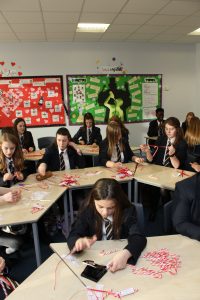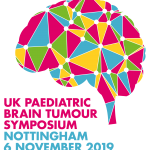Greensward Academy
This week, we were honoured to join Sharon as we received a heartfelt donation from the staff and pupils at Greensward Academy in Essex. Over the past academic year, the school has raised an incredible £4,038.29 in support of brainstrust! Their continuous support and passionate fundraising efforts showcase their tremendous community spirit, which is something to be very proud of. We would like to thank all the staff, pupils, parents and the surrounding community who have contributed towards this fantastic achievement; making an incredible difference within the brain tumour community.
Take a look at Sharon’s story to find out more.
Sharon’s Story
How it all began
It was during the organisation of a fundraising event for brainstrust last year that I was approached by the Head of Year 9 at our local school; The Greensward Academy in Hockley (Essex) to suggest a partnership between myself, as a member of the community living with a brain tumour, and the Leadership teams at the school. All with view to working together to raise funds for their chosen charity for the coming school year. This then led them to choose brainstrust, as it was clearly something close to my heart but also resonated with the school. Sadly, a couple of students had lost a parent to this devastating illness over recent years, meanwhile, two students currently at the Academy are living with a brain tumour. So, a fantastic partnership was born.
There seems to be a good number of people in Hockley alone that are living with this diagnosis. Some of those people have a higher grade tumour, and that pushed me even more to raise awareness of this disease. I also wanted to share how parents can spot vital signs and symptoms, which can reduce the effects if caught quickly enough. Early intervention can help to save lives.
A year of fundraising
I was honoured to be invited to meet with the students in the Leadership Teams, and see for myself the infectious energy and enthusiasm of Mr McAllen, the Head of Year 9. I got involved with their working parties; I assisted with their distribution and quality control of “Candy Canes” at Christmas; Chocolate Easter Eggs with a golden ticket up for grabs at Easter; “Take a Break” KitKats with the all-important hidden ‘£25 ticket’ for the final Summer Term before ‘breaking up’ for the end of the School Year!! All of this, alongside “Non-Uniform Days” each term, resulted in an incredible final total of £4,038.29 for brainstrust!
The school also used this opportunity to show the students a PowerPoint presentation from brainstrust at one of their assemblies to explain who and what brainstrust stands for as a relatively small brain tumour charity. This was used as a tool for raising awareness of this devastating illness, and the effects it has on peoples lives, whether they be living with a brain tumour, have lost someone dear or are currently caring for someone with a brain tumour. It also went so far as to show the students how the money they raise would be spent, and how these funds would continue to help support the ongoing workshops, resources, Meetups, the Brainbox’s. Not to mention, supporting ‘Little brainstrust’ which is solely for children and teenagers that are currently receiving treatment for and/or living with a brain tumour; support for those young people, and for their families too.
Infectious community spirit
I for one would love it if other schools locally to me, and further afield too, could get behind this charity to help to highlight the incredible work that they do, but to also raise awareness amongst parents and students alike.
I feel very proud of the staff and students getting behind a fantastic charity with such determination and enthusiasm, it really was heart-warming. To see all the additional work that is put in by staff and students alike with such fun and passion, it was something I feel very honoured to have been a part of. I had so much fun!
A big shout out to all the staff & students of Greensward Academy, and the people of Hockley, for showing such kindness and generosity. You never fail to make me feel very humbled to part of this community.











